It may take time to learn how to train a foal to like touch. They come into this world with the instinct of not trusting humans, because we are “predators” in their eyes and they are prey.
While many horse training resources tell you to touch and handle your newborn foal as soon as possible, sometimes your foal really struggles with being touched and you have to take a step backwards in your approach.
Or maybe it doesn't feel right or good to you to “force” touch on them. Sometimes forcing touch backfires and makes them more scared. Whatever the reason, using a different approach can make a difference when you are training a foal to get accustomed to being touched.

Use Their Natural Curiosity
Foals are naturally curious and that curiosity can be a big advantage when you need to know how to train a foal to like touch. If your foal is struggling with human touch, try introducing something long, foal-safe and foal-proof to work on touch instead. I use a pool noodle as it serves two purposes.
- Pool noodles can be hacks for all sorts of things (read more at Pool Noodle Hacks for Horses and Barns) and introducing them early can pay off big later on.
- It allows them to experience touch from something other than your hand. Thus, it feels safer to them.
Teaching My Foal to Like Touch With a Pool Noodle
My 1-week old palomino colt Fyre just had not warmed up to my touch as much as I had hoped. He was still pretty unsure about it and could at times become aggressive/dominant about it. I decided I needed to try a slower approach.
I brought out an extra pool noodle that was laying in my barn. He came trotting right over when I walked into the paddock with it. He wanted to know everything about it, and for him, that involves licking and “mouthing” it.
Once he got pretty comfortable with it, I began to move it around, and just slowly moved it across his back.
It was pretty cold here when I filmed this, so he was wearing a turnout blanket. It turned out to be a good buffer for the pool noodle. He was able to experience it even more slowly than if he hadn't been wearing the turnout blanket.
Go ahead and watch the short video clip as I want to make a few points about my approach with him, and you need to see the video first.
Keep It Slow and Steady
When you are training a foal to like touch, just as with any other horse training, you have to go slow in the beginning. If you'll notice I only brushed the pool noodle across his back twice. He seemed to tolerate it well and I wanted to stop there.
He was very touchy with his legs, so I while I did touch his back leg once, I only did it once.
I kept the introduction and session short and positive. Even though he usually “comes back for more” quickly, I wanted to end things on a positive note. And I didn't want to overwhelm him.
The Science Behind a Horse's Touch Sensitivity.
Horses have senses that are far stronger, and in some cases very different, than humans.
In the case of touch, consider that a horse can feel a fly land on a single hair. Yes, a tiny fly lands on an individual hair in the horse's coat and they can feel it.
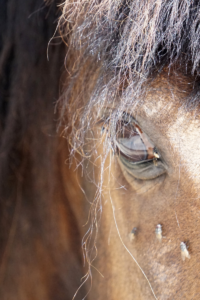
A foal's coat and skin, which is being exposed to new things literally every hour of every day, may be extra sensitive.
Certain parts of the body are more sensitive than others. The flanks, withers, groin and heel bulbs have more receptors than the chest for instance.
The muzzle area is probably THE most sensitive.
Every horse has something known as vibrissae growing around their eyes and muzzle. Around the muzzle, they are known as whiskers. These seem to have a dedicated part of the brain connected to them and they even have their own unique supplies of nerves and blood.
Vibrassae are their own sensory organ essentially! Disturbingly, it was (and still is for some) common practice to trim a horse's whiskers for cosmetic purposes. It's sort of like taking away a second set of eyes for them.
You can see the vibrassae a.k.a. whiskers on my gelding Ankh in this picture.
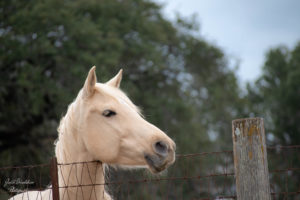
The vibrassae protect the eyes and muzzle by letting the horse know if something harmful is getting too close to their eyes or muzzle.
When it appears that a horse is smelling something, they are actually “feeling” it as their remarkable sense of smell picked up the scent of the item long before they got close enough to touch it.
Some horses also seem to be more sensitive to touch than others. Ankh has always been very sensitive to touch. And it seems he passed this trait on to his son Fyre (he was gelded after Fyre was conceived.)
Yet I've had others that love a deep massage and/or a good thorough scratch.
Best How To Train a Foal to Like Touch Tip: Do What Works for You and Your Foal
Some foals will respond better to touch than others. Some will get it quickly and others will take time.
Try different tools and devices if you don't have a pool noodle. Maybe try using a crop or short whip/training stick.
A soft brush may even feel better to the foal and can be a way to train your foal to like touch. It introduces them to grooming as well so that's another dual-purpose tool like the pool noodle.
Experiment with a variety of tools, brushes, materials such as halters, lead ropes, and blankets. The response they give you is good information for you and will expose them to a plethora of different things.
Every new thing they experience gives them insight and wisdom.
Have you tried any of these things with your foal or horse? What reactions did they have? Tell me all about it in the comments.

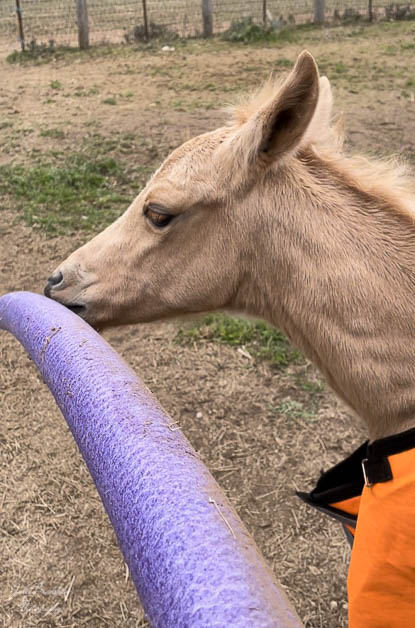
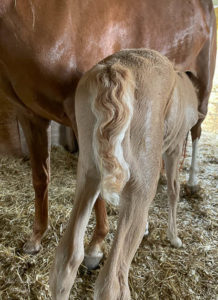
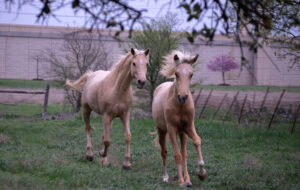
Pingback: Pool Noodle Hacks for Horses and Barns - Julie Bradshaw-Horse Magic and Training